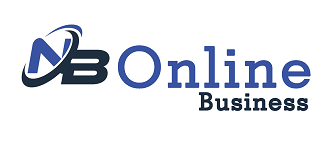In today’s world, digital accessibility means that everyone can use the available resources regardless of their technical abilities or physical limitations. Few people, if any, have a consistent method of interacting with digital media. Certain people avoid them. There is a possibility that persons with learning disabilities need less information than those with visual impairments.
What’s the Use?
There are a number of compelling arguments in favor of making digital resources easily accessible. Now more than ever, people with disabilities may have access to resources that can help them learn to utilize technology. In this way, digital material and services may become more widely available. Improvements in digital accessibility are a boon to people with all kinds of impairments. Vision, hearing, and movement impairments are all possible effects.
Gains From Being Accessible to Many
Technology may help those who do not have sight problems as well. It may, for instance, simplify the usage of numerous technologies for the elderly. It’s possible that people who don’t know English as a first language will have less trouble using the Internet and other digital resources.
QualityLogic is a company that provides internet connection assistance. Your software will be put to the test, holes will be discovered, and information will be refined to make it more accessible to everybody with their help. There’s also the added bonus of expanding brand awareness and ultimately expanding the client base.
Generating Valuable Products and Services
Online research offers several benefits. If successful, it might help companies reach a wider audience. You may attract a sizable customer base in need of assistance with your digital goods and services by making them easy to obtain. Differentiating oneself in your field or at work may also be accomplished by implementing novel approaches. Due to this assistance and access, many people who were previously unable to utilize your company’s benefits may now be able to do so.
Authoring New Media Files
Don’t ramble on; get to the point quickly. This point may appear apparent, yet it bears restating. One method of accomplishing this is to steer clear of jargon and speak in a straightforward manner. Create several versions of your material, including audio and video, in case any of your customers want or prefer a particular medium.
Maximize the Potential of Your Media
Add visuals like photos and videos to your text to make it more engaging and easy to read. However, these difficulties may be lessened if the appropriate software is used. Those who are unable to watch images or videos should be provided with text descriptions. Make sure that those with low vision can see the photos and videos you create.
Don’t Forget Accessibility When Planning the Layout
Web Content Accessibility Guidelines (WCAG) 2.0 is only one of several rules and regulations that mandates accessible digital content. The Web Content Accessibility Guidelines (WCAG) 2.0 is an established set of norms and recommendations. More and more governments are adopting these kinds of rules and procedures. Keeping up-to-date with the most recent developments is essential for ensuring your goods and services continue to satisfy standards.
Why Are the Advantages of Digital Access Significant?
According to the World Health Organization, “disability is an umbrella phrase that incorporates impairments, activity limits, and participation restraints.” Body, sense, thought, intelligence and conduct problems can all contribute to a person’s incapacity. As one of the world’s most widespread diseases, it might afflict as many as a billion people. Despite this, people with impairments sometimes face obstacles in gaining employment or completing their schooling.
To address these issues, we must provide universal access to digital goods and services. The creation of websites and mobile applications is tailored to the needs of people with visual, auditory, cognitive, and intellectual impairments. By making digital information and services more accessible, we can assist individuals with disabilities to overcome some of the barriers they confront and live full, inclusive lives.
How People With Disabilities Use the Internet
People with a wide range of impairments sometimes struggle to gain access to digital information. People who are blind or have visual impairments may benefit from a text-to-audio conversion service. Deaf and hard-of-hearing persons may need captions or transcripts to engage with any form of media fully. People with cognitive disabilities may benefit from having the information streamlined. Additional input devices, like switches or eye-gaze sensors, may be necessary for those with physical restrictions to access the content. Website designers and developers could make their digital content more approachable to a wider audience by keeping these varying standards in mind.
Don’t Forget About the Blind in Your Designs
It’s essential to remember that while dealing with digital data, there is little opportunity for direct interaction with the physical world. Some people, such as those who are blind or have limited eyesight, need a lot of visual signals to understand what’s happening. Therefore, several safety measures must be taken into account while creating digital entertainment for kids. For instance, there has to be equivalent text for every image. Video and audio explanations must also include captions. By following these rules, you can make your digital data available to anybody.
Meeting the Needs of the Deaf
It is essential to consider the tastes of a wide range of audiences while producing digital content. Traditional content might be challenging to understand for those with special needs. People who are deaf or hard of hearing can still access digital content thanks to closed captioning.
When making digital material with closed captions, there are a few things to keep in mind. In the end, it all comes down to how comprehensible the captions are. This includes doing things like making use of large letter sizes and staying away from difficult-to-read typefaces. It’s also important to synchronize the subtitles and audio. To do this, you can use automatic subtitle-generation software or transcribe the audio track by hand. Verifying the accuracy of the captions is essential.
If you stick to these guidelines, your digital information will be accessible to people of all abilities. One way to do this is by using closed captions, which will make the information more accessible to people with hearing and/or vision impairments. Audio explanation or a sign language interpreter are also available options. It’s possible to meet the needs of all your customers by providing them with digital material.
Manufacturing Aids for the Mentally Impaired
Several considerations should be made when making digital material for those with cognitive difficulties. One must always keep in mind that each individual calls for a customized strategy due to their individuality. Yet, if certain necessary conditions are met, data accessibility can be improved.
Services aimed towards the disabled, for instance, often promote the use of concrete examples and pictures. As a result, the information is more readily accessible to the reader. Arguments and criticism need several outlets. Giving pupils the freedom to engage with the material in their own way increases the likelihood that they will learn and remember it. Designers may use these ideas to make digital instructional content that can be used all around the world.
Visit www.qualitylogic.com if you’re interested in learning how QualityLogic can make your business more easily available online. If you need some advice or a whole new website, their team can help!







